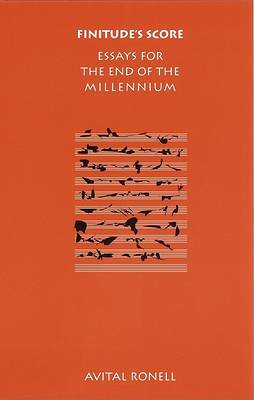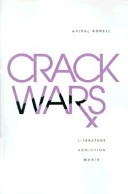Texts and Contexts
2 total works
Suspending the distinction between headline news and high theory, Avital Ronell examines the diverse figures of finitude in our modernity: war, guerrilla video, trauma TV, AIDS, music, divorce, sadism, electronic tagging, rumor. Her essays address such questions as, How do rumors kill? How has video become the conscience of TV? How have the police come to be everywhere, even where they are not? Is peace possible? "[W]riting to the community of those who have no community--to those who have known the infiniteness of abandonment," her work explores the possibility, one possibility among many, that "this time we have gone too far" "One last word. It is possible that we have gone too far. This possibility has to be considered if we, as a species, as a history, are going to get anywhere at all."
v. 2
Avital Ronell asks why "there is no culture without drug culture." She deals with the usual drugs and alcohol (and their celebrities: Freud's cocaine, Baudelaire's hashish, the Victorians' laudanum), and moves beyond them to addictions that are culturally accepted--an insatiable appetite for romance novels, for instance, and romance itself. It is a commonplace of modern culture to presume that there is a subculture or counterculture deeply saturated with drugs, but such modern cultures need subcultures, and need drugs on every level. Culture defines itself, its classes, its power structures, and its economy in terms of how it allows and encourages drugs to circulate. If drugs are dangerous, that danger seems to increase their appeal for millions. If drugs are unnatural and addictive, gasoline is a drug. What is art but a kind of drug, and what is art criticism but a kind of criticism of drugs and drug-induced states? Gustave Flaubert's Madame Bovary takes up the problems of drugs and addiction in numerous ways, which Ronnell unpacks and presents as examples of the safe and unsafe. From Emma Bovary's romantic hallucinations to her suicide by arsenic, she moves through this realistic novel constantly reaching for the unreal. For Ronell, Emma Bovary represents the first addict, embodying a yearning that calls from the bottom of her humanity, and which it seems can only be satisfied by some sort of drug.

